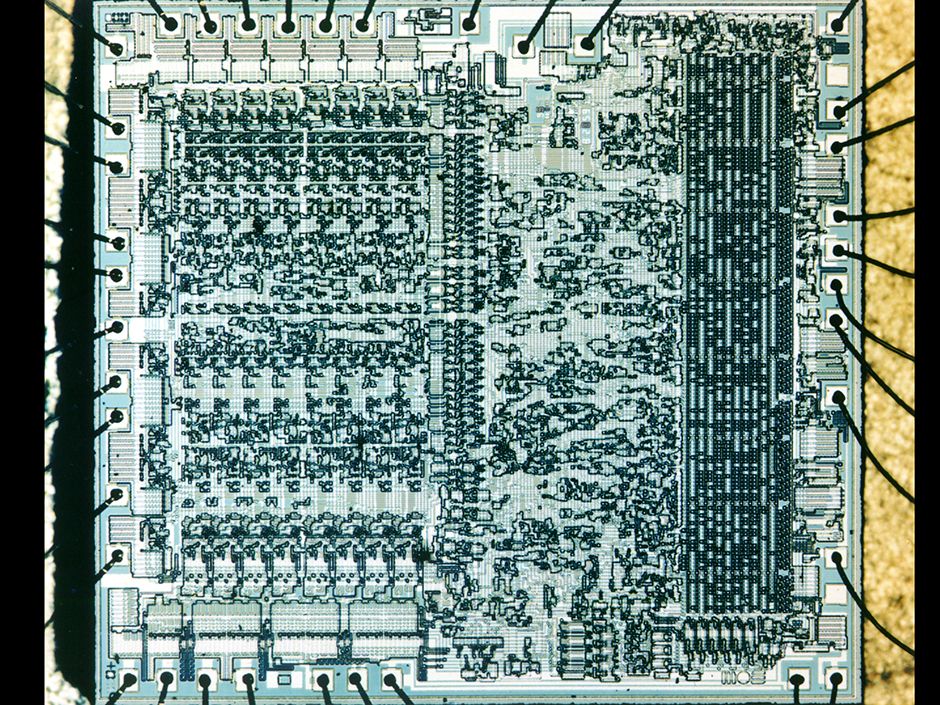Chip Hall of Fame: MOS Technology 6502 Microprocessor
From the heroic age of 8-bit CPUs, this processor powered the Apple II, Commodore 64, BBC Micro, and more
6502 Micro-processor
Manufacturer: MOS Technology
Category: Processors
Year: 1975
When one particular chubby-faced geek stuck one particular chip into one particular computer circuit board and booted it up, the universe skipped a beat. The geek was Steve Wozniak, the computer was the Apple I, and the chip was the 6502, an 8-bit microprocessor developed by MOS Technology. The chip, and its variants went on to become the main brains of ridiculously seminal computers like the Apple II, the Commodore PET, the Commodore 64, and the BBC Micro, not to mention game systems like the Nintendo Entertainment System and the Atari 2600 (also known as the Atari VCS). Chuck Peddle, one of the chip’s creators, recalls when they introduced the 6502 at a trade show in 1975. “We had two glass jars filled with chips,” he says, “and I had my wife sit there selling them.” (In 2016, Peddle admitted that at the time he had only enough working processors for the upper layers of the jars—they were mostly filled with nonworking chips.) Hordes showed up. The reason: The 6502 wasn’t just faster than its competitors—it was also way cheaper, selling for US $25 while Intel’s 8080 and Motorola’s 6800 were both fetching nearly $200.
The breakthrough that permitted this cost reduction, says Bill Mensch, who created the 6502 with Peddle, was a minimal instruction set combined with a fabrication process that “yielded 10 times as many good chips as the competition.” The 6502 almost single-handedly forced the price of processors to drop, helping launch the personal computer revolution. A revised version of the chip is still in production and some manufacturers still use it—in commercial embedded systems—as well as many hobbyists. More interesting perhaps, the 6502 is the electronic brain of Bender, the depraved robot in “Futurama,” as revealed in a 1999 episode.
The 8-bit 6502 was a smash hit from the get-go when it was released in 1975, due to its low price.
▲
Chuck Peddle, cocreator of the 6502.
▲
Legendary computer designer Steve Wozniak built the Apple I and Apple II around the 6502 processor.
▲
Released in 1977, the 6502-powered Commodore Pet boasted a built-in tape drive and typically came with 4 kilobytes of RAM.
▲
Commodore’s later 6502-based computer, 1982’s Commodore 64 became the most popular home computer ever, with more than 17 million sold.
▲
Not well known outside the British Isles, the BBC Micro relied on a 6502 and educated a generation about computers starting in 1981. It also prepared the ground for the ARM processors that power most smartphones.
▲
A key games console of the 1980s, the Nintendo Entertainment System used a 6502 that was modified, for example, to allow the chip to generate sound directly.
▲
The Atari VCS (later known as the Atari 2600) games console was released in 1977 and used a cheaper version of the 6502 that could only use 8 kilobytes of memory.
▲
In an episode of that aired on November 14, 1999, the irascible robot Bender is shown to run on a 6502, pretty good going as the show is set a thousand years in the future. Image: Futurama TM/Twentieth Century Fox Film Corporation
▲
